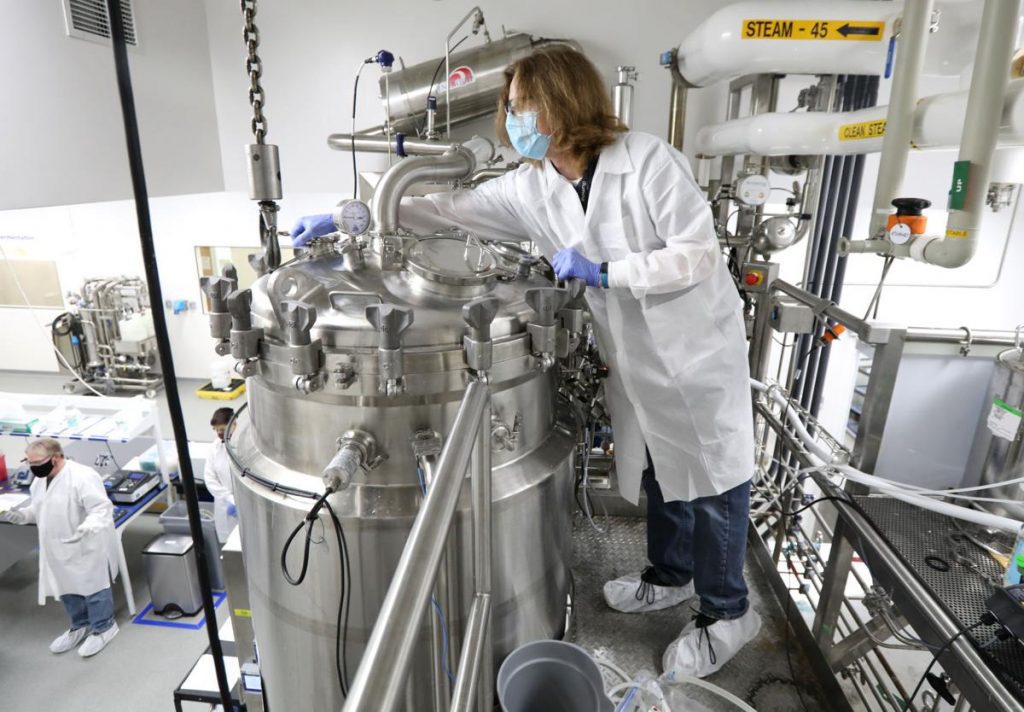21 Dec Key materials for genome sequencing made at Illumina in Madison

Will Wayland, a manufacturing specialist at Illumina, checks valves on a fermentation tank. The company’s facility in Madison makes enzymes for use globally in its DNA sequencing machines. AMBER ARNOLD, STATE JOURNAL
At the west end of University Research Park on Madison’s West Side, workers brew a potion with a powerful purpose.
Their flasks and tanks resemble those at breweries, but these workers aren’t fermenting yeast to make beer. They’re using harmless strains of E.coli bacteria to grow enzymes for genome sequencing.
San Diego-based Illumina has a major share of the global DNA sequencing market, and the company’s manufacturing center in Madison makes enzymes — proteins that speed up chemical reactions — to run its sequencing machines. With 180 employees, the hub also produces what is called “library prep,” or kits to prepare blood or saliva samples for sequencing.
“We’re producing all the reagents and tools for everything the company does,” said Bill Checovich, general manager at Illumina’s Madison campus.
In 2011, Illumina bought Epicentre Biotechnologies, a Madison company founded in 1987. Epicentre developed a technology, called Nextera, to simplify and speed up preparation of samples for DNA sequencing, which is now part of Illumina’s products.
In a building that opened in 2019 on Genomic Drive, workers make about 40 different enzymes. They induce E.coli cells to produce the desired proteins and purify the mixtures by passing them through centrifuges, filters and columns.
In the fermentation room, equipped with a 1,000-liter tank, a caramel-colored liquid containing glucose and other ingredients feeds the E.coli cells. “The more cells you have that are expressing enzyme, the more enzyme you have when you go to break the cells open and purify them,” said Carolyn Pettersson, associate director for manufacturing operations.



